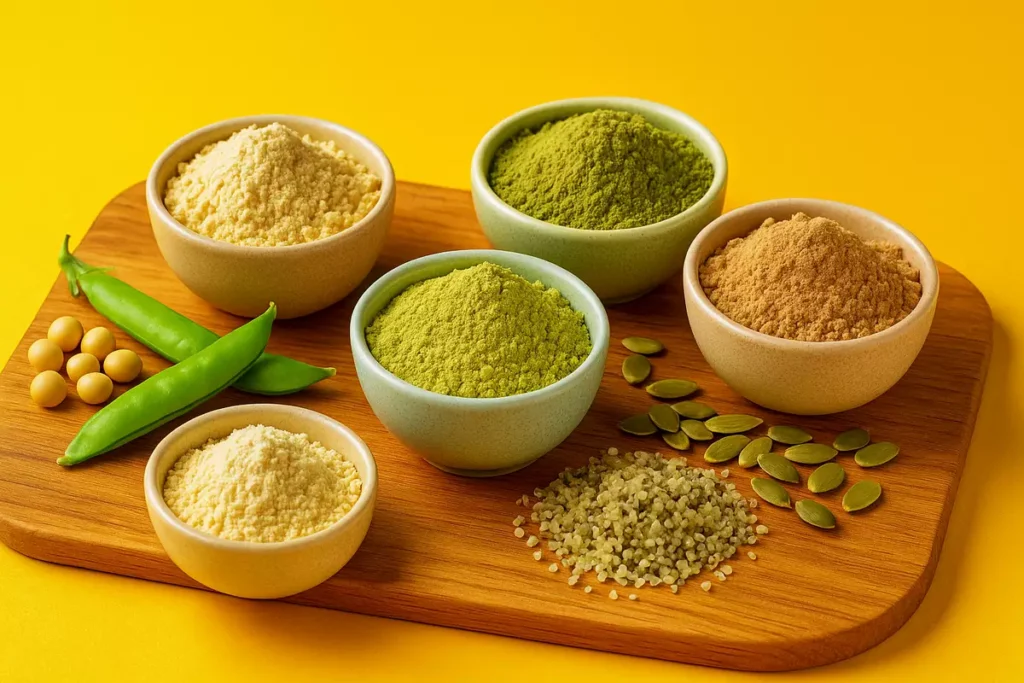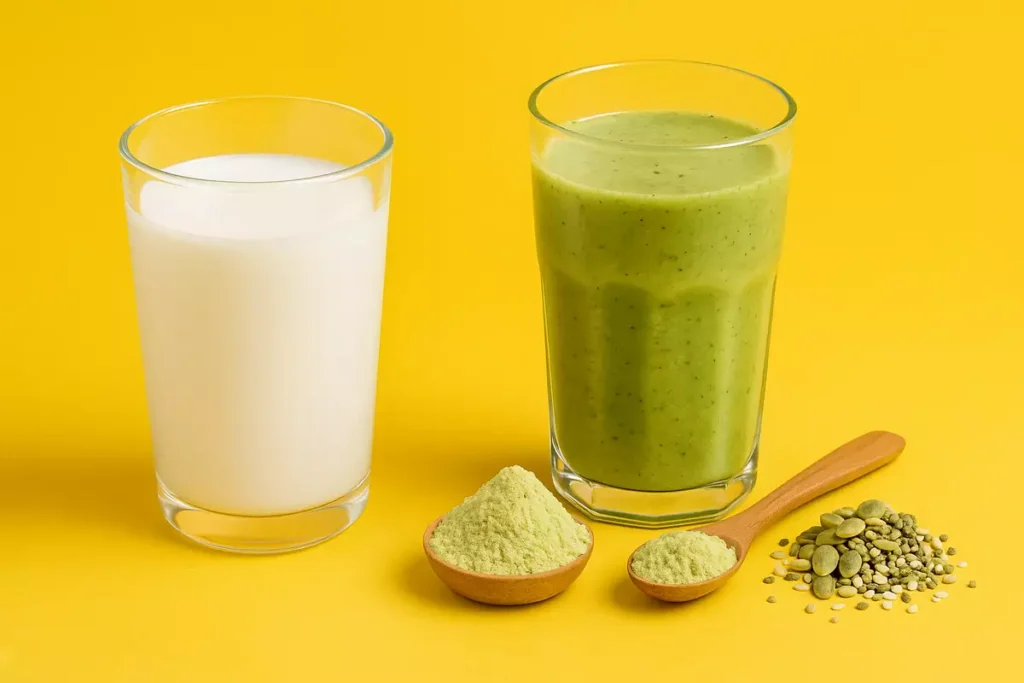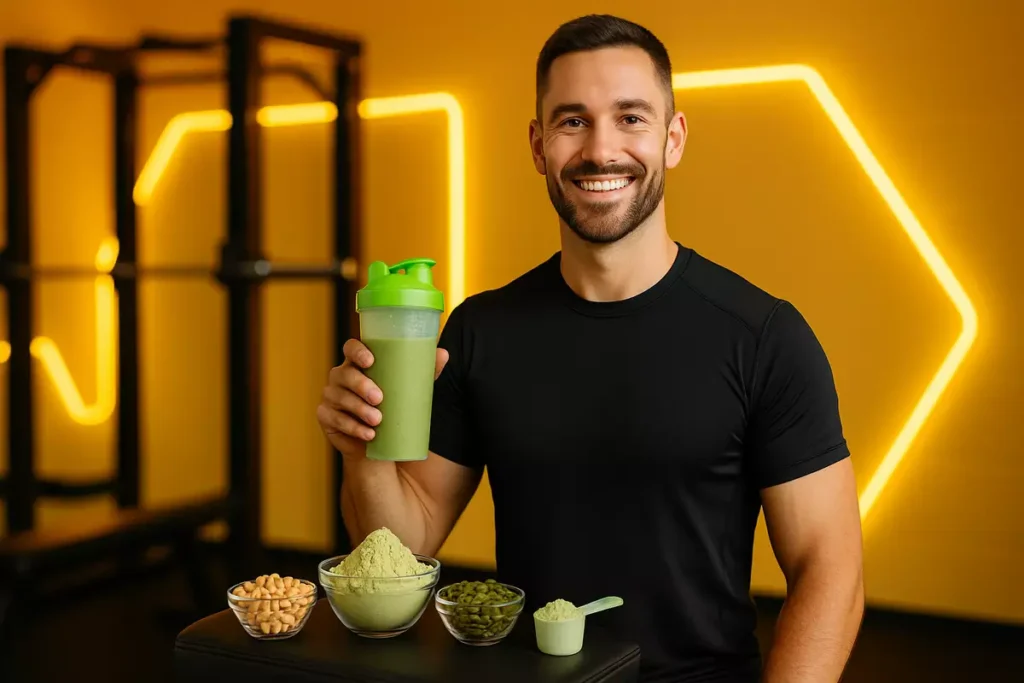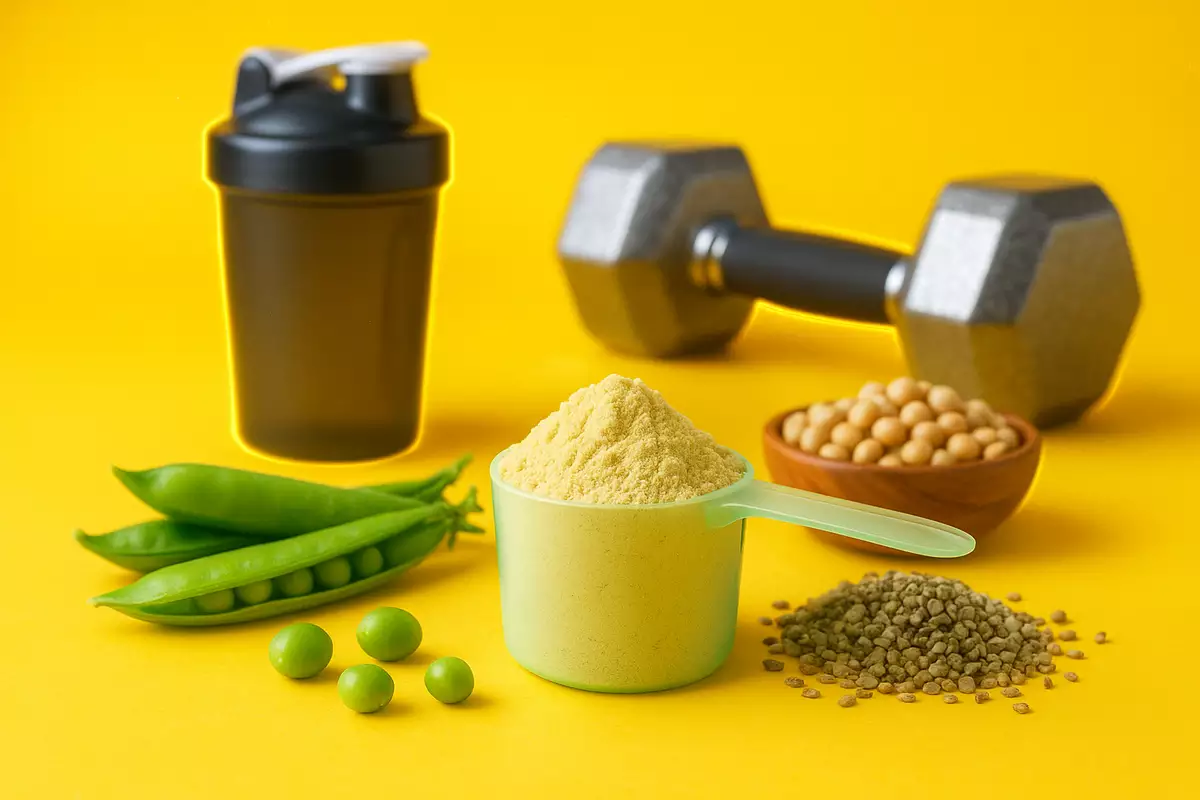Are you searching for the best plant-based alternatives to casein protein? You’re not alone. Many athletes and fitness lovers love casein for its slow-digesting benefits — but not everyone can tolerate it.
Casein can sometimes cause bloating, discomfort, or simply doesn’t align with a vegan lifestyle. That’s where plant-based proteins step in.
From soy and pea to hemp and rice blends, these options deliver muscle recovery, satiety, and strength without the heaviness of casein.
Table of contents
Why Look for Casein Alternatives?
Casein protein is often called the “night-time protein” because it digests slowly and releases amino acids gradually. It’s excellent for preserving muscle during sleep.
But here’s the truth — it doesn’t suit everyone. In my own case, casein sometimes left me bloated and heavy in the morning. Many of my clients also struggled with digestion or avoided casein for lifestyle reasons like veganism.
If you’re in the same boat, don’t worry. The best plant-based alternatives to casein protein are soy protein, pea protein, hemp protein, brown rice protein, and pumpkin seed protein. Each of them brings unique benefits — and I’ll share my experiences and client stories to help you decide.
(Related: Casein Protein Benefits for Women in Fitness)
Top Plant-Based Alternatives to Casein Protein

Soy Protein – Closest to Casein in Amino Acids
Soy protein is the most similar to casein when it comes to amino acid profile. It’s rich in leucine, a key trigger for muscle growth.
I’ve used soy protein after workouts and found the recovery nearly identical to casein — but without the heavy digestion.
Client story: Anna from Germany used casein at night but often woke up nauseous. After switching to a soy-pea protein blend, she slept better and maintained her recovery without discomfort.
(Read more: Casein vs. Soy Protein – Slow Digestion Compared)
Pea Protein – Digestible and Great for Recovery
Pea protein is one of my favorites. It’s light, easy on the stomach, and still powerful for muscle repair.
When I switched from casein to pea protein before bed, I woke up feeling lean and refreshed instead of heavy.
Real-life example: My friend Carlos from Spain had cramps with casein. Within weeks of using pea protein, his morning workouts felt stronger, and recovery stayed on point.
Hemp Protein – Omega-3s and Fiber Benefits
Hemp protein goes beyond muscle. It packs omega-3 fatty acids, fiber, and minerals.
I used hemp protein during a cutting phase, and it gave me clean, steady energy. The taste is earthy, but blending it with banana and almond milk balances it out nicely.
Brown Rice Protein – Hypoallergenic and Easy to Digest
Rice protein isn’t as complete alone, but when combined with pea protein, it forms a full amino acid profile.
Client experience: David from Canada, a vegan client, built lean muscle on a pea-rice blend. He couldn’t tolerate casein, but this combo worked perfectly for his goals.
(Learn more: Casein vs. Blended Protein Powders for Athletes)
Pumpkin Seed Protein – Mineral-Rich and Muscle-Friendly
Pumpkin seed protein doesn’t get enough credit. It’s rich in magnesium, zinc, and iron — all essential for muscle function.
I like adding it to smoothies with pea protein. Together, they provide protein plus vital nutrients for recovery and strength.
Blended Plant Proteins vs. Single Sources
Most plant proteins have amino acid gaps. That’s why blends like pea-rice or soy-hemp work best.
They mimic complete protein profiles and provide steady nourishment — very similar to what casein does, but without the heavy stomach.
How Plant-Based Proteins Compare to Casein

- Amino Acid Profile: Soy and pea-rice blends come closest.
- Absorption Rate: Casein is very slow, while plant proteins are moderate but easier to digest.
- Satiety: Casein is filling but can feel heavy; pea and soy keep you satisfied without discomfort.
- Recovery: Both work well, but plant blends often feel lighter and cleaner.
(More insights: How Long to See Results with Casein Protein)
When and How to Use Plant-Based Protein Powders
- Post-Workout: Choose pea or soy protein for fast recovery.
- Before Bedtime: A pea-rice blend is the best substitute for casein, providing overnight amino release.
- Daily Nutrition: Add hemp or pumpkin seed protein to smoothies for an extra nutrient boost.
(Related reading: Micellar Casein for Overnight Muscle Repair)
Trainer’s Recommendation & Final Takeaway

From both personal use and coaching, my top recommendation is a pea-rice protein blend. It’s complete, digestible, and avoids the bloated feeling casein sometimes causes.
If you prefer single-source, go with soy protein — but pea protein is the most universally well-tolerated.
Final word: If you asked me right now, “What’s the best plant-based replacement for casein protein?” my answer would be: pea-rice blend. It’s balanced, effective, and helps you stay light, strong, and consistent in training.
(Also see: Casein Protein Myths Debunked and Top Rated Casein Protein for Bodybuilding)



Leave a Reply